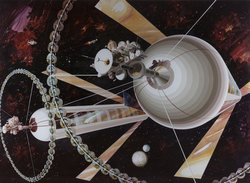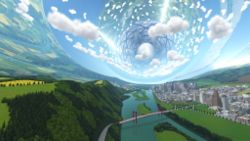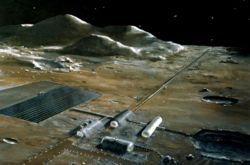Difference between revisions of "Space habitats"
| Line 13: | Line 13: | ||
There have been many studies over the past thirty years to understand what kind of habitats could be built and what size constraints there are based on current engineering knowledge. Surprisingly in the 1970s the answer was that using bridge and ship-building techniques it would possible to build cylindrical mega-structures up to 30 kilometres long and 6 kilometres in diameter, with a single one able to comfortably house several million people. | There have been many studies over the past thirty years to understand what kind of habitats could be built and what size constraints there are based on current engineering knowledge. Surprisingly in the 1970s the answer was that using bridge and ship-building techniques it would possible to build cylindrical mega-structures up to 30 kilometres long and 6 kilometres in diameter, with a single one able to comfortably house several million people. | ||
| − | Being mega-scale engineering projects, it is not hard to see that similar techniques used in the habitat's construction could be used to make the interiors of these habitats be like beautiful places on Earth, such as rolling green English countryside. Some designs even have enough atmosphere inside them to make the sky appear blue. | + | Being [[Advanced automation|mega-scale engineering]] projects, it is not hard to see that similar techniques used in the habitat's construction could be used to make the interiors of these habitats be like beautiful places on Earth, such as rolling green English countryside. Some designs even have enough atmosphere inside them to make the sky appear blue. |
==Material== | ==Material== | ||
Revision as of 01:56, 3 January 2009
|







